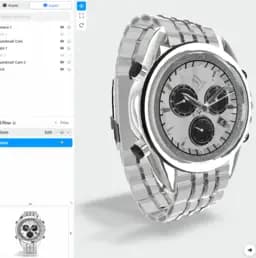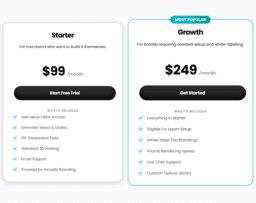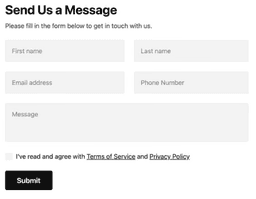Initial Comparisons: WebXR vs WebGL
For developers seeking a comprehensive solution to produce immersive VR and AR experiences, WebXR is the optimal choice. However, for producing three-dimensional graphics on the web, WebGL excels with a low-level 3D graphics API.

Key Differences Between WebXR and WebGL
- WebXR targets AR and VR applications, while WebGL focuses on creating 3D graphics.
- WebXR is a successor to WebVR, enhancing its capabilities with broader support for VR and AR functionalities. In contrast, WebGL is a standalone API based on OpenGL ES.
- WebXR leverages browser functionalities, enabling web-based cross-platform apps. WebGL requires specific interaction with HTML document elements.
- WebGL is an open-source tool accessible without a JVM, whereas WebXR is reliant on specific browser APIs.
| Comparison | WebXR | WebGL |
|---|---|---|
| Frontline Technology | At forefront of VR and AR evolution | Low-level 3D graphics API |
| Unified VR & AR? | Yes | No |
| Performance | WebXR Device API addresses performance drops | Performance based on platform |
| Browser Support | Chrome, Firefox, Edge, Opera, Samsung Internet 12+, Oculus | All major browsers including mobile |
| API Capabilities | Device location, movement vectors, 3D render | GPU 3D acceleration, native GLSL support, DOM interface integration |
| Applications | Interactive 3D art, 360 video & immersive entertainment, Model visualizations | Online 3D graphics |
| Support for Future New Devices | Yes | No |
| Content Deployment | Rapid user onboarding, rapid deployment, content update, and accessibility | Depends on how the application is built |
| Rendering Technology | No (requires developer) | Yes (built on OpenGL ES) |
| VR Controller Support | Yes | No |
What Is WebXR and Who’s It For?
WebXR stands as the vanguard for VR and AR evolution, pioneering the fusion of virtual and augmented realities to simplify the creation of immersive 3D art, VR tools, and more. Designed with profound capabilities like detection and location of VR or AR devices, it translates movement vectors and aids in rendering 3D scenes. Its low-latency, high-precision, and rapid data processing essential features ensure seamless disruption-free experiences. Whether you’re a VR/AR enthusiast, a developer seeking a flexible API, or an aficionado of immersive entertainment, WebXR is the game-changer for you.

Pros of WebXR
- Unified platform for VR and AR.
- Substantial support in major browsers.
- Automatically supports new devices, making it future-proof.
- Supports VR and AR sessions using the same API.
- Allows for browser-based cross-platform apps, ideal for mass markets.
Cons of WebXR
- Specific challenges with traditional communication methods.
- Glitches can significantly impact user experience.
- Developers are expected to handle rendering and texturing—WebXR doesn’t manage 3D data or its display.
What Is WebGL and Who’s It For?
WebGL, the low-level 3D graphics API, harnesses the power of HTML5 Canvas to bring high-quality 3D graphics to the web. As the rightful successor to Flash, WebGL features cross-platform compatibility, GPU 3D acceleration, and native GLSL support without relying on plugins, making it a prized asset for game developers and graphic enthusiasts alike. Synced seamlessly with OpenGL ES, it’s fully integrated into major browsers, marking a monumental step for interactive 3D graphics on the web.

Pros of WebGL
- Offers GPU 3D acceleration and native GLSL support.
- Integrated directly into browsers, eliminating the need for plugins.
- Cross-platform compatibility bolsters its reach and usability.
- Automatic memory management and no requirement for compilation, making it developer-friendly.
Cons of WebGL
- Dependent on OpenGL, which is relatively slower and lacks DirectX’s comprehensibility.
- Quality issues of OpenGL have often led game developers to opt for Windows-targeted D3D10+
WebXR vs WebGL: Pricing
Both WebXR and WebGL technologies come without explicit costs as they are browser-based APIs, instead the price is only implicit in the required development time and skills.
WebXR
Given that WebXR is a Web API designed to make it easier to create VR and AR experiences for the web, there are no specific costs associated to its usage. The real cost lies in the necessary development skills and time spent to build and maintain applications using this technology.
WebGL
Similarly to WebXR, WebGL is an application programming interface used for rendering interactive 3D and 2D graphics. As such, it doesn’t have a set price tag. Again, the inherent cost is in the investment of time and the technical know-how required for development using WebGL.
Code Examples for WebXR & WebGL
WebXR
This code snippet enables a simple WebXR scene with an embedded 3D model. The viewer can move around the scene and look at the model from different angles. The code uses three.js library and WebXR’s immersive VR mode. Please ensure you have a WebXR compatible device and the necessary three.js files loaded.
var scene = new THREE.Scene();
var camera = new THREE.PerspectiveCamera(75, window.innerWidth/window.innerHeight, 0.1, 1000);
var renderer = new THREE.WebGLRenderer();
document.body.appendChild(renderer.domElement);
var geometry = new THREE.BoxGeometry(1, 1, 1);
var material = new THREE.MeshNormalMaterial();
var cube = new THREE.Mesh(geometry, material);
scene.add(cube);
camera.position.z = 5;
function animate() {
requestAnimationFrame(animate);
cube.rotation.x += 0.01;
cube.rotation.y += 0.01;
renderer.render(scene, camera);
}
animate(); WebGL
This WebGL code snippet generates a rotating multi-colored pyramid. It’s a classic example showcasing depth buffering and 3D transformation functions. Ensure that the “glMatrix-0.9.5.min.js” library is included in your project.
// Pyramid
var pyramidVertexPositionBuffer;
var pyramidVertexColorBuffer;
var mvMatrix = mat4.create();
var pMatrix = mat4.create();
// angle of rotation
var rPyramid = 0;
mat4.identity(mvMatrix);
mat4.translate(mvMatrix, );
mat4.rotate(mvMatrix, degToRad(rPyramid), );
gl.bindBuffer(gl.ARRAY_BUFFER, pyramidVertexPositionBuffer);
gl.vertexAttribPointer(shaderProgram.vertexPositionAttribute, pyramidVertexPositionBuffer.itemSize, gl.FLOAT, false, 0, 0);
gl.bindBuffer(gl.ARRAY_BUFFER, pyramidVertexColorBuffer);
gl.vertexAttribPointer(shaderProgram.vertexColorAttribute, pyramidVertexColorBuffer.itemSize, gl.FLOAT, false, 0, 0);
setMatrixUniforms();
gl.drawArrays(gl.TRIANGLES, 0, pyramidVertexPositionBuffer.numItems);WebXR vs WebGL | The Verdict Is In
WebXR and WebGL are two heavyweight technologies commanding the digital world. The verdict? Depends largely on audience segment. Let’s break it down:
For 3D, AR, VR Artists & Designers
WebXR revolutionizes your creation process of immersive 3D art. Its low latency, high-precision tech stack achieves the illusion of reality. Leveraging advanced APIs, it helps effectuate VR and AR device interactions, simplifying the creation of networked experiences. WebGL, on the other hand, might seem a tad bit primitive in comparison, being a low-level 3D graphics API. However, its integration with HTML5 canvas might still be a boon to some traditionalists.

For Game Makers
If gaming is your raison d’être, WebGL‘s low-level API presents cross-platform compatibility and brings 3D to the web without plugins. But even here, WebXR flaunts its versatility, supporting VR handheld controllers or gamepads and making Internet browsers an exciting gaming avenue.

For Web Developers
For web developers, WebXR’s mass market adaptability infuses resilience in your development projects. As new devices roll out, WebXR readies your apps to embrace and adapt swiftly. Its browser-based access attributes offer rapid deployment, content update, and accessibility. WebGL fits the bill if you’re a stickler for a developer-friendly environment, offering automatic Javascript memory management and direct compatibility with HTML5.

WebXR and WebGL, both formidable. Your call should hinge on the immediate demands and long-term vision of your project. For immersive, adaptable, cutting-edge applications, go WebXR. Lean on WebGL for simpler, uncomplicated yet interactive 3D utilities on the web.







